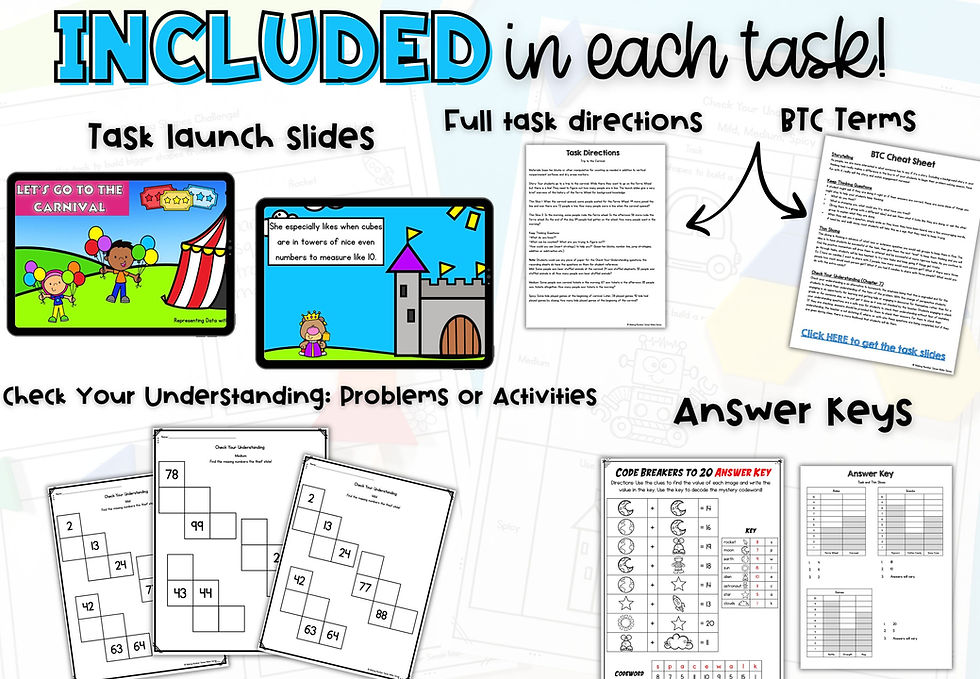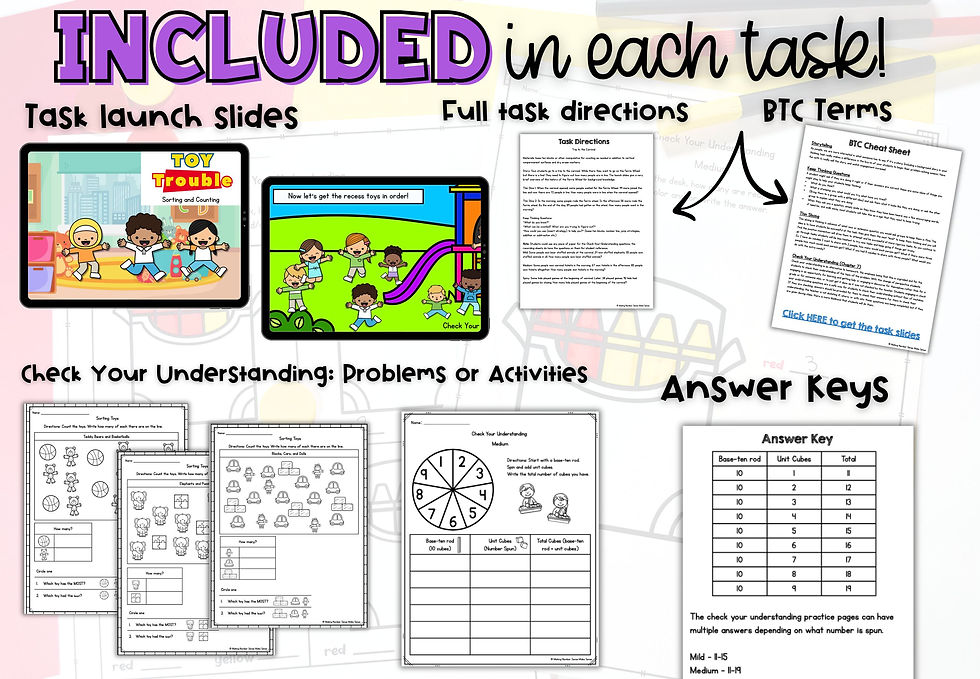3 Number Sense Routines for Elementary Math
- Lara

- Jul 17
- 3 min read
This post contains affiliate links.

Number sense routines are quick opportunities for academic conversations around math. That sounds fancier than it is! It’s a way to get your students thinking critically about math, getting their brains primed for the lesson to come!
Which One Doesn’t Belong
Which one doesn't belong is one of my favorite number sense routines for any time, but especially at the beginning of the year.
It’s a great way to...
Get your students to think critically and creatively.
Get your students used to talking about their thinking.
Get your students to practice academic conversational skills like agreeing/disagreeing respectfully, paraphrasing, repeating, clarifying, etc.
Invites all learners to participate because there are no wrong answers.
One way to do a which one doesn’t belong number talk is to start with 4 images that may or may not have something in common, and ask your students which one doesn’t belong? After they share, ask them to justify their answer by saying why they think one doesn’t belong with the rest.
Since there are no wrong answers (I would suggest telling them that!), it encourages them to take a leap and build confidence talking to a partner or in front of the class, which will set them up for the year.
You can read about this number sense routine more in this Which One Doesn’t Belong post.
Quick Images
Quick Images is a number sense-building activity that you can do with your kindergarten or first-grade students during your math block, either whole group or small group. They can be used as a warm-up, quick check, reflection, or exit ticket during your math time. The images that you use can be dot patterns, finger patterns, 5-frames, 10-frames, etc, in organized or random order. The goal of this activity is for students to be able to see the image and figure out how many there are quickly without counting or subitizing.
Tell your students that you are going to show them an image for a few seconds and then hide it, so they have to be looking because it's going to be covered quickly! When they know what it is, have them put their thumb up close to their chest so you can gauge if your students need more time to think or if they are ready to share.
You can get some extension ideas on how to use Quick Images in this post.
Choral Counting
Counting as a group is something we do daily in kindergarten, and when learning to count to 100, if your kids understand that the number system works in a pattern, it becomes really quick and easy for them to keep their count going because it repeats, and especially if they know their decades are counting by tens.
One way that I really like to discuss the number system explicitly is by doing a number sense routine called a choral count and writing down the numbers we are counting. I highly recommend the Choral Counting and Counting Collections book by Megan L Franke, Elham Kazemi, Angela Chan Turrou.
In a choral count, you choose a range of numbers that you want the students to count, highlighting a specific concept or idea you want your students to explore and think more deeply about. As you count together, you will be scribing the numbers you say in a specific formation. Then have your students take some think time to tell you what they notice, and you will underline, circle, and write what they say. This helps the class notice new number patterns, practice tricky number sequences, and build classroom community by listening and understanding that other people's ideas have value.
You can learn more about implementing Choral Counting in this post.
If you’d like to get enough number sense routines to last you the whole year, you can get those number sense routines here; they are ready to use, no prep required!





Comments